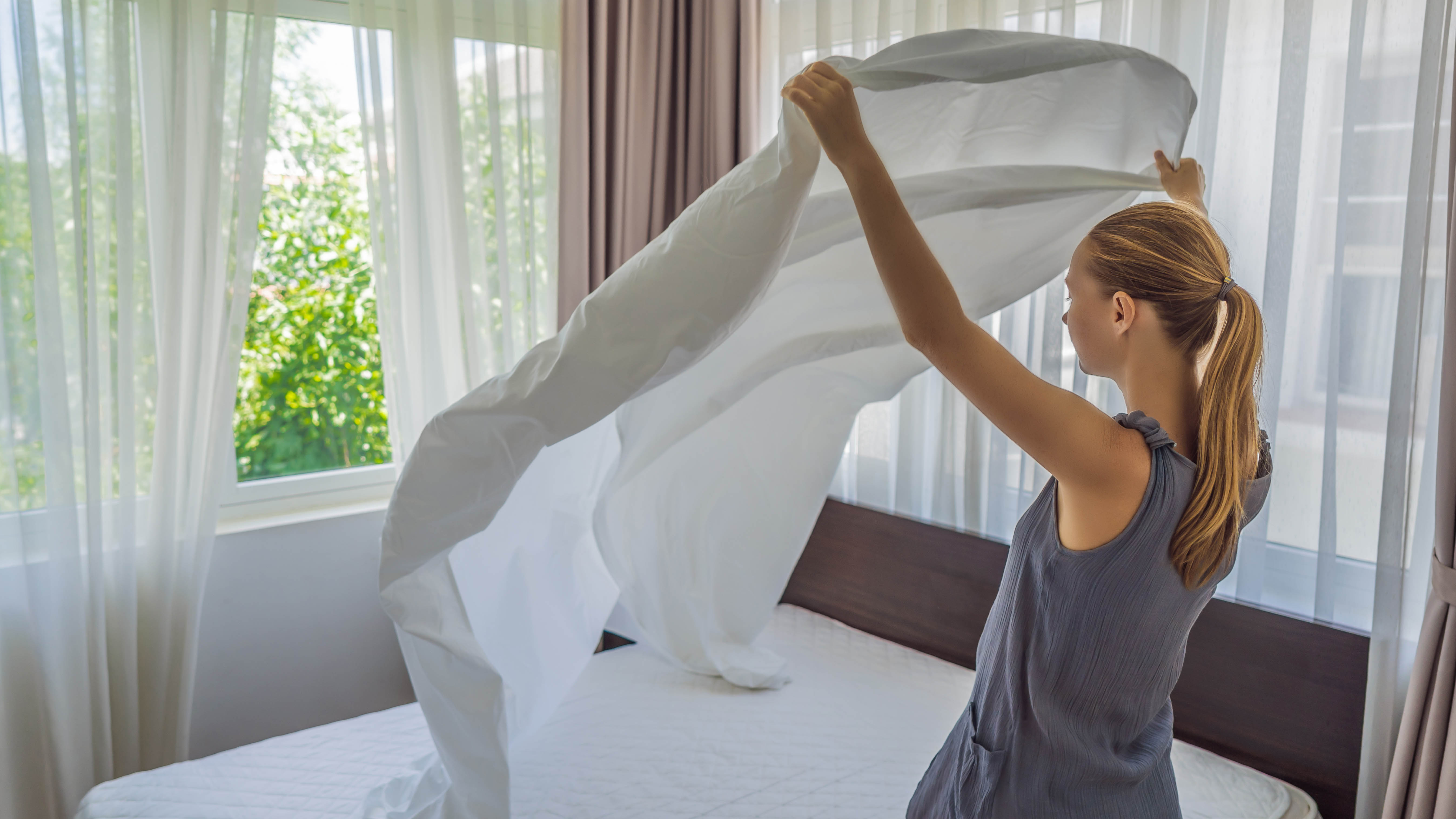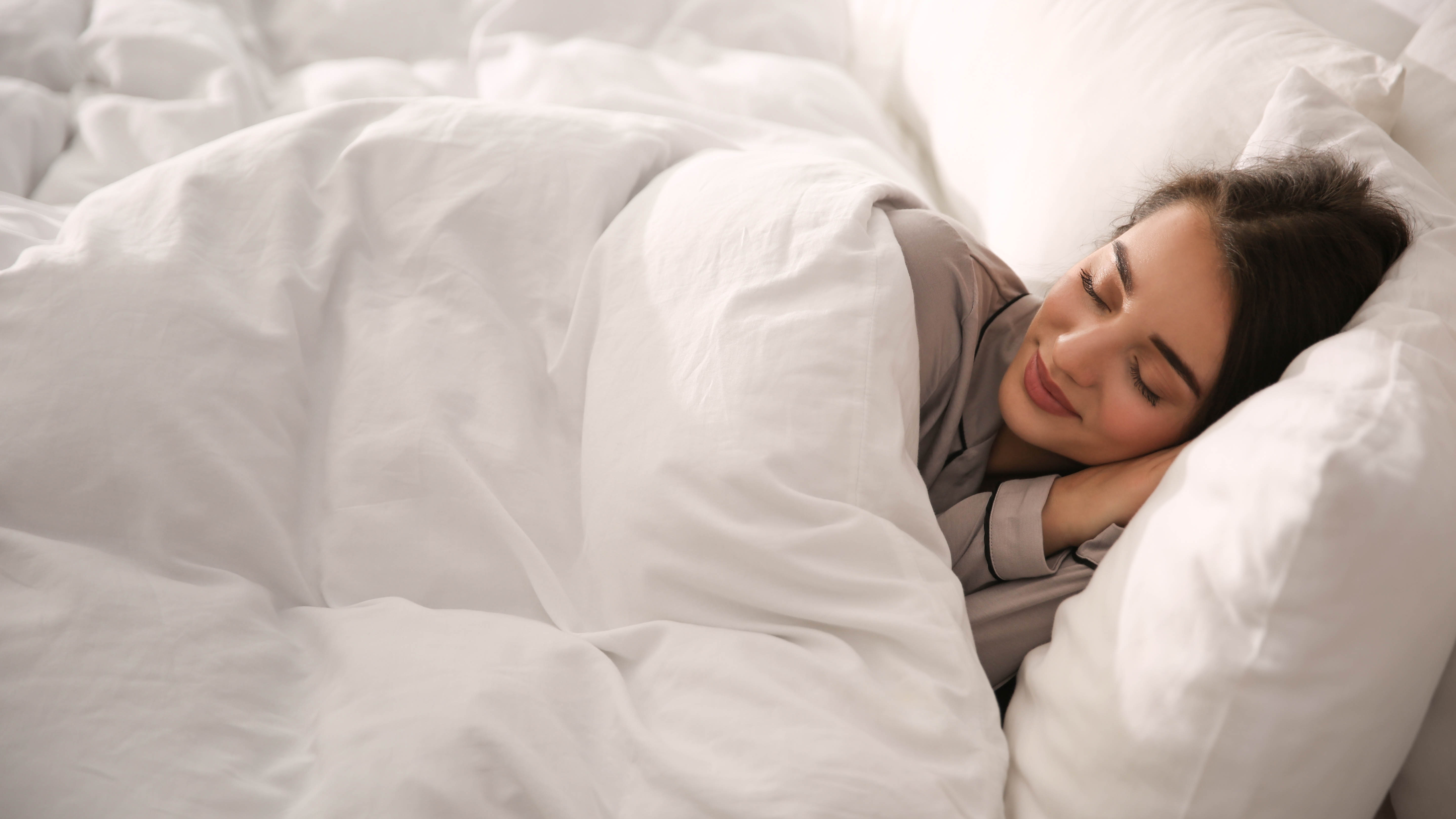You’ve been making your bed all wrong

When it comes to making our beds in the morning, we each have our own routine. Some will simply pull the comforter up to pillows and tuck it in tight. Others will chuck no end of decorative pillows and a throw on top. Some aren’t even that fussed about making the bed, and will leave it au natural. Whichever of the above you follow, odds are you’re not making your bed the right way.
That’s right, there is indeed a right way to make your bed. Follow this, and your sheets will stay cleaner for longer, providing a more refreshing night’s sleep. Ignore it, and even the best mattress will encourage dust mites and mold. Keen to learn more? Here’s the right way to make your bed, and why it’s essential to your morning routine.
What’s the wrong way to make your bed?

First, we should explain what’s so wrong with your traditional bed-making method. Every night, we secrete sweat and oils as we sleep in our beds. You might have seen the tell-tale yellow stains as evidence when you strip your bed. So, it’s not hard to believe that there’s plenty of heat and moisture retained in your sheets by the morning.
By immediately making your bed and sealing the comforter on top of your mattress, you’re locking in that excess heat and moisture, leaving it stagnant to produce a musty smell when you return later. The warm humidity combined with poor ventilation makes for an ideal breeding ground for bacteria, mold and dust mites as well.
So long story short, whether you neatly make your bed, or simply leave the comforter sprawled on top, you’re not being overly hygienic or giving your bed the best care. Even if you opt to use a mattress protector, or a mattress topper, bacteria and dust mites will still build up on the surface, so this advice applies to all.
What’s the right way to make your bed?
You need to effectively release that trapped moisture and heat each morning, and give the mattress a sufficient chance to air before you replace the bedding. So rather than tuck the sheets in, pull them back.
You need to effectively release that trapped moisture and heat each morning. Hang the comforter off the end of the bed, or even remove it entirely, so there’s optimum air circulation.
Be generous as you do this as well — when you think about it, heat and moisture will have accumulated around your entire body, so the sheets need to be pulled back sufficiently to ventilate the same area. You can either hang the comforter off the end of the bed, or even remove it entirely, so there’s optimum air circulation.
Get instant access to breaking news, the hottest reviews, great deals and helpful tips.
Your pillows will also have been compressed throughout the night, so it’s a good idea to dislodge them and fluff them up before putting them back. Any heat trapped between them will then be released and the air will circulate through the filling more effectively — although this depends on the type of pillow you use.

There are several environmental factors which can make a difference as well. For instance, by opening up the windows and doors in your bedroom, the excess moisture can be vented. The best dehumidifiers can also keep moisture levels low, while the best air purifiers can reduce a musty smell.
It’s not the prettiest of bed-making methods, but it’s the most hygienic. And your bed needn’t stay like this. Simply give it a couple of hours before you return and make it the traditional way. By this point, your sheets should have returned to room temperature and any moisture will have dispersed. In following this method, you will essentially reduce the bacteria which would otherwise be found in your bed, and it can prevent dust mites from breeding as well, because the environment isn’t so favorable.
If your bed smells musty despite your newfound bed making method, it might be time to wash the pillows and the comforter. We sweat every night, and so regardless of how well we ventilate our beds in the morning, bacteria and grime can’t be avoided. You should wash your pillows and comforter every four months for guidance. For more information, see how to wash a pillow and how to wash a comforter. If a replacement is needed, check out the best pillows.
Bedding care tips

- Invest in mattress and pillow protectors; these will provide an extra barrier of protection for your bedding against general spills and grime.
- If you find yourself overheating often at night, try reducing the thickness of your comforter. You can also lower the temperature of your thermostat to save some money, or invest in temperature-controlled bedding, such as the Amazon Basics Cooling Gel-Infused Memory Foam Mattress Topper ($42.83, Amazon).
- Remember to clean your mattress as often as required to keep on top of spills, stains and dust mites. Left untreated, a dirty mattress can contribute to allergies. Here’s how to clean a mattress for guidance.
- If you struggle from allergies regularly, invest in hypoallergenic bedding to help you sleep. This deters dust mites and pet dander thanks to the tiny pores.
- Is your mattress particularly musty? Try sprinkling baking soda directly on top and leaving it to deodorize for a few hours before vacuuming it back up.
Have you ever wondered what happens to your body when you sleep on your side? If so, you might need one of the best mattress for side sleepers or perhaps check out one of the best memory foam mattress for comfort.
Or do you have trouble sleeping? Try these 5 tips for helping you sleep better, or check out these 5 plants that could help you sleep better.

Katie Mortram used to be a Homes Editor for Tom's Guide, where she oversaw everything from kitchen appliances to gardening tools, as well as smart home tech. Specializing in providing expert advice for cleaning and home manintenance, she now works as Household Advice Editor for Good Housekeeping.
